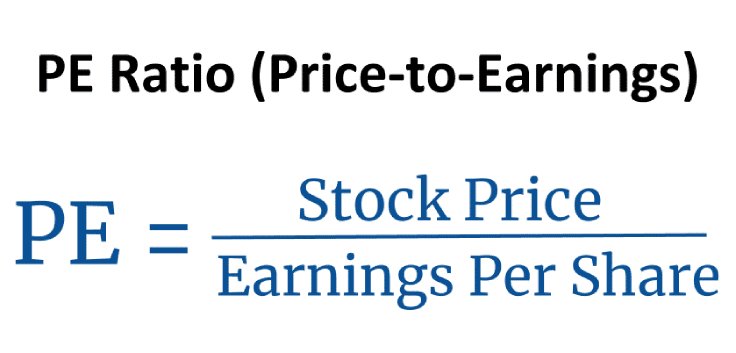Earnings Per Share (EPS)
Earnings per share, or EPS, is a simple calculation that shows how much profit a company can generate per share of its stock.
It's calculated by dividing earnings by outstanding shares, which you can do either quarterly or annually, like so:
EPS = total earnings / outstanding shares
EPS is one of the most critical metrics impacting a stock's price. When EPS increases year-over-year, the stock price usually increases. As a result, investors and analysts often use EPS to evaluate stocks, as well as future EPS estimates to predict stock movements.
Below is a complete overview of EPS, including how to calculate it, limitations, the different types, and basic vs diluted EPS.
What is EPS?

Earnings per share (EPS) is the most commonly used metric to describe a company's profitability.
It shows how much profit can be generated per share of stock and is calculated by dividing earnings by outstanding shares.
In simple terms, it's the amount of profit that each stock in the company “owns.” If all the company's profits were distributed to shareholders, this is how much you would get for each share you own.
EPS can be reported for each quarter or fiscal year. It can also be projected into the future via forward EPS. The most commonly used version is the trailing twelve months (TTM) EPS, which can be calculated by adding up earnings per share for the past four quarters.
EPS is often compared quarter-over-quarter or year-over-year to assess profitability trends.
EPS is also essential to earnings calls and guidance for forward earnings expectations.
SummaryEarnings per share (EPS) represents the amount of profit that can be generated per share of stock. It can be calculated quarterly or annually.
How to calculate EPS
Earnings per share is calculated by dividing the company's total earnings by the number of outstanding shares. Here is the formula:
EPS = total earnings / outstanding shares
You can find total earnings, which is the same as net income, and the number of outstanding shares on a company's income statement.
Quarterly income statements can be accessed from the company's 10-Q filings on either the SEC or company website, where they're usually in the investor relations section. The annual income statement can be found on the 10-K.
Example EPS
Below is the calculation of Pfizer's (PFE) EPS for the quarter that ended on July 3, 2022.
According to its 10-Q, Pfizer reported $9,906 million in net income during the quarter and had 5,593 outstanding shares. Here is the EPS calculation:
$9,906M / 5,593 = $1.77 quarterly EPS
You can also find the EPS on stock information websites like Stock Analysis by accessing the stock's page and selecting "Financials." You can browse by quarter, annual, or trailing.
SummaryTo calculate a company's earnings per share, divide total earnings by the number of outstanding shares. The data for this calculation is found on the income statement.
What are the types of EPS?
Here are the main types of EPS:
- Reported EPS / GAAP EPS: This is the standard EPS that uses generally accepted accounting principles (GAAP).
- Adjusted EPS: This is calculated by including or excluding items of net income that are one-offs, so may differ from basic EPS. In the case of exclusions, the adjusted EPS may be artificially high.
- Ongoing / pro forma EPS: This type of EPS is based on regular net income and excludes unusual or one-off events.
- Retained EPS: EPS is calculated by taking earnings, adding back currently held retained earnings, and subtracting total paid-out dividends.
- Cash EPS: Cash EPS takes operating cash flow and divides it by diluted outstanding shares. It's considered a purer number and representation of real cash earned, as net income is easily manipulated.
- Book value / carrying value EPS: Often called book value of equity per share (BVPS), this is calculated using a company's balance sheet to measure equity per share.
SummaryThere are several types of EPS including reported EPS, adjusted EPS, ongoing EPS, retained EPS, cash EPS, and book value EPS. Reported EPS is most commonly used.
Basic vs diluted EPS
There are often two EPS numbers reported: basic earnings per share and diluted earnings per share. There are some crucial differences between the two:
- Basic: Includes all of the company's outstanding shares.
- Diluted: Includes all outstanding shares, stock options, warrants, and restricted stock units that could become outstanding shares in the future.
As it includes fewer items, basic EPS is usually slightly higher than diluted.
However, the diluted figure is generally better and more comprehensive when making investment decisions. And unless otherwise noted, most EPS numbers are the diluted EPS.
SummaryEPS is typically reported as basic or diluted. Basic EPS includes all of the company's outstanding shares, while diluted EPS includes shares, stock options, warrants, and restricted stock units.
Which factors affect EPS?
Two main factors affect EPS: earnings and number of shares.
- Earnings: A company's EPS will increase as earnings go up. This can happen due to factors like sales growth or cost-cutting. If earnings decrease, EPS will also decline.
- Shares: A company's EPS will increase as the total number of outstanding shares goes down, such as in the case of share buybacks. It will decrease when the share number increases, such as if the company issues new shares.
In short, if earnings go down or the number of shares increases, EPS will decline. If earnings increase or the number of shares decreases, EPS will rise.
SummaryEPS is affected by a company's earnings and number of outstanding shares. If earnings go up or the number of shares decreases, EPS will rise. If earnings decrease or the number of shares increases, EPS will decline as well.
Limitations of EPS
EPS is a market multiple ratio, meaning it simplifies financial statements into a number that can be compared to peers. While useful, this is a snapshot and does have limitations.
Here are a few limitations of EPS:
- Difficult to compare companies in different sectors
- Very simple, as factors like stock price or growth rate are missing
- Only accounts for either past data or projections
- Not adjusted for different accounting practices
Additionally, EPS has certain limitations as an individual metric.
For example, unprofitable companies have a negative EPS, making the metric less useful.
Instead, you could look at the EPS trend over time to see if the company is on its way to becoming profitable, or evaluate other metrics like revenue growth, customer acquisition, book value, etc.
EPS can also be misleading or manipulated.
For example, buybacks can affect EPS, as the number of outstanding shares is then reduced. This can appear to show EPS growth, even while earnings may be static or declining.
Companies can also mislead investors by reporting “adjusted” EPS and removing certain expenses from the calculation.
Moreover, EPS only considers net income and overlooks the capital required to generate earnings, market price, and stock performance, thus ignoring several other factors.
As important as EPS is, it's wise to look at other profitability metrics as well, such as operating income and free cash flow.
SummaryWhile EPS is a widely used and essential tool, it has several limitations and can be easily misinterpreted. When evaluating a company, it's important to consider other profitability measurements as well.
What is a "good" EPS?
A higher EPS generally indicates a higher value and profits relative to share price.
However, there's not necessarily one quantifiable number that can be considered a “good” EPS, as there are other factors to consider when determining your interpretation.
For example, many high-growth companies have negative EPS numbers, though this doesn't mean it's a “bad” figure. Tesla (TSLA), for example, has long been a popular growth stock but it took 18 years before the company reported a profitable year.
In such cases, the company may be investing heavily in expenses like R&D to grow.
To evaluate whether an EPS is strong, see if it exceeds expectations and does so consistently.
Each quarter, analysts determine an EPS estimate. If the earnings report exceeds estimates, a stock may jump in price. If earnings underperform expectations, the price may drop.
A company that more consistently beats estimates could be considered a better stock option than a company that doesn't. Nevertheless, keep in mind that these EPS bets are also relative, based on the market and economic conditions for corporate profits.
Additionally, you can evaluate EPS based on how it compares to industry peers and its trends over time. Though EPS growth is relative to the broader market and economic conditions, investors generally want to see a company's EPS grow year over year.
SummaryA higher EPS generally indicates a higher value and profits relative to a company's stock price, though there's no number set as a “good” EPS. Instead, consider EPS trends over time and how a company's EPS compares to that of its peers.
What's the relationship between P/E and EPS?
The price-to-earnings (P/E) ratio and EPS work together but evaluate different things. The P/E ratio is used to analyze a stock's value, while EPS is used to determine a stock's profitability.
The P/E ratio is one of the simplest and most popular ways to value a company, especially when comparing it to industry competitors and benchmarks such as the S&P 500.
On the other hand, EPS is an easy-to-calculate, readily available way to interpret how much profit a company makes per share.
But even though they're different measures, these ratios are connected. You need to know EPS in order to calculate the P/E ratio.
Additionally, both metrics have similar limitations, but there are good reasons why both are standard ways to research and evaluate stocks. Historically, they've been reliable methods of comparing companies, determining value, and finding buy or sell opportunities.
SummaryThe P/E ratio is used to assess a stock's valuation, while EPS evaluates profitability. They have similar limitations, but both have historically been reliable metrics for comparing companies and stocks.
The takeaway
Earnings per share (EPS) is an important metric that investors and analysts use to assess the profit a company generates per share of stock.
It's a straightforward way to assess profitability, as it takes the complexities of the income statement and distills it into one simple number. EPS is a simple, efficient way to analyze a company's growth trends as well as how it compares to its peers.
And, historically speaking, EPS has been the standard measurement when comparing stocks and evaluating a company's profitability.
Nevertheless, it's important not to limit your fundamental stock research only to EPS, as other metrics should be evaluated as well to generate a well-rounded assessment.





